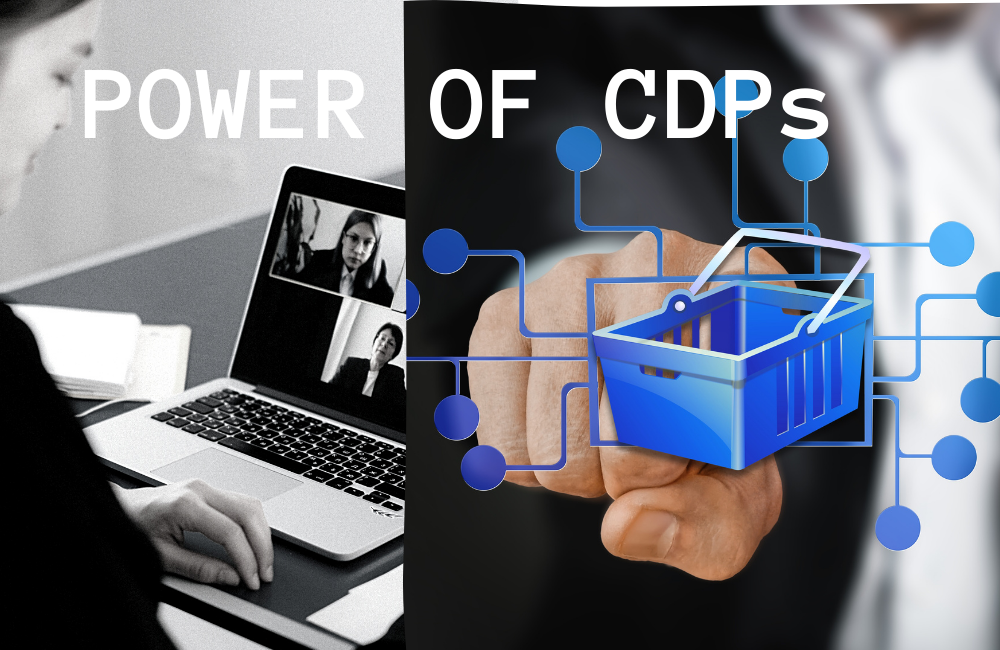If there is one thing that has strengthened during the COVID-19 pandemic is our reliance on technology. Even more so, smart technology, also referred to as SmartTech in the modern business parlance. In the business world, the pandemic brought limitations in the form of a reduced workforce and resources. The year 2020 also tightened the corporate world’s take on smart decision-making in relevance to objectives and functionality.
Right from the front, the decisions have been well calculated, well carried out, and in the right direction. However, what the pandemic couldn’t stop was the addition of data that just kept on coming. With the world preferring digital technology and smart handheld devices, online consumption proliferated in no time. OpenVault reported an increase in the consumption of data at around 402 GB in Q1 2020, an increase of 47 percent over the last year. Hence, businesses with limited resources at hand must do something about the amount of data that is flowing from every side.
This is where a Customer Data Management Platform or a CDP comes into the picture. By utilizing CDPs, businesses can look out for customers easily and create the best communication strategy. After all, around 95 percent of senior executives believe that data is pivotal for their business strategy. With eyes set on potential customers, marketers can achieve greater customer acquisition, better satisfaction, and overall best retention rates. With CDM they can even filter quality data and gain higher profits.
Customer Data Management or CDM is the process of collecting, managing, and analyzing data throughout the customer’s journey. Its ultimate goal is to provide real-time, personalized, channel-agnostic customer experiences. IBM has reported that around eighty three percent of companies suffer from data inaccuracy. This inaccuracy, according to Gartner, can cost $15 million per business per year. Hence, it is vital to have accurate data and the right type of data.
Choosing the Right Type of Data
The data can be categorized into four types:
Identity
This type of data state-away reveals the customer’s identity. This type of data can be collected via sign up pages, payment details, subscriptions, amongst others.
Qualitative Data
This data is based on the interaction between the customer and the brand. It is obtained through a web analytics tool, transaction history, cookies from websites, social media activity, customer support.
Descriptive Data
An accurate level of information through seasonal growth, decline, and lifespan of the customer cycle. It is collected via surveys, questionnaires, interviews, advanced lead forms.
Qualitative Data
Derived on the predictive choice of customers based on the product. It can be acquired through a simple implementation of the journalists six – who, how, when, where, why, what. It can also be collected through social media channels, customer behavior, personalized signed up newsletters, and feedback forms.
The Importance of CDP
As time has progressed, both, the expectation and evolution of customers have come to a place where marketing strategies have shifted. This digital data is used by marketers to carry out data-driven marketing or advertising. With this data-preferably first hand-marketers can market via omnichannel, cross channel, and multi-channel marketing strategies.
Hence, to take true advantage of customer data, marketers must have robust CDM strategies.
Ok, So What Are the Key Components?
Customer Data Management can be classified into four key components; Data Collection & Integration, Data Management, Data Analysis, and Data Activation.
Data Collection and Integration
This is the first step in creating a strategic CDM. According to Forrester, on average, around sixty to seventy-three percent of data goes unused for analytics. Marketers, firstly, need to understand what data is to be ingested into the system to effectively build a CDM framework.
After bringing it to the central system, it must be processed through ETL or Extract, Transform, and Load. Extract refers to the ingestion of the data; Transform refers to structuring it in a standard way, and Load to load all the data into data management platforms.
As such, the data will be become structured and will be in a single place.
Data Management
This step entails connecting the data points to start building complete, profiles of customers or segments. In MarTech, for example, this step would include building identity graphs and 360-degree profiles of customers and adding consent to ensure regulatory compliance.
Data Analysis
With the data being catered to customer-oriented profiles, marketers can run predictive analysis to model potential outcomes. Basically, the data is ready for use.
Data Activation
The last step involves the movement of data between marketing technology systems and to run data-driven marketing campaigns. The role of marketers here expands to integrating data alongside tacking performance and analytics systems to optimize the campaign.
Types of CDPs
Customer Data Platform
A Customer Data Platform (CDP) is a software that aggregates customer information and organizes it through different touchpoints and is used by other software, systems, and marketing activities. CDPs capture and structure in-house, centralized consumer profiles in real-time.
The industry is growing rapidly, with the cdpinstitute.org estimating that the number of CDP distributors and the number of jobs have doubled over the last year while funding rose by $280 million dollars (29%).
By incorporating data from a number of first, second and third-party sources consumer data platforms create customer profiles. That means CRM and DMP, website and e-commerce behavior information, transactional systems, web formats, e-mail and social media activity, and more.
Data Management Platforms
Data Software platforms collect and manage campaign and audience information, mainly for running digital advertising campaigns. The data is typically anonymized and contains anonymous data from third parties, such as cookies, user identification identifiers, and IP addresses.
The Forrester Wave: Data Management Platforms, Q2 2019 found that Adobe and Salesforce led the DMP market. Adobe bridges the DMP and customer database (CDP) gap as an omnichannel, according to the study. Between 2016 and 2018, the growth rate showed a remarkable 93% for customers. The analysis shows that the deal is ideal for marketers who want to direct DMP insights to omnichannel marketing plans with just one vendor.
While a consent management system is developed in Salesforce’s Audience Studio. According to Forrester, these restrictions on consumer consent could well affect its scope, but consumers welcome the new emphasis on privacy, quality, and accuracy.
Customer Relationship Management
Customer Relationship Management ( CRM) preserves data for consumers and service providers. Although CRM and CDPs share some similarities, the processing of data is different. Only when the consumer has contacted the brand, CRM systems can save data. Instead, CDP’s are able to collect and store customer data using various online and offline platforms.
Companies now expect to link platforms and technology to consumer data from customer service and mail marketing to customization in a way that provides a more personal experience. CRM software is today the world’s largest software market and growth does not slow. Indeed, by 2020, CRM is projected to produce revenues of over $80 billion.
Digital Experience Platform
A DXP is a set of technology that enables blogs, mobile applications, forums, and other digital resources to be created and managed. To enhance customer experience, CDPs supply consolidated customer data, customer groups, etc. to DXPs.
Almost 48 percent of the brands have introduced a digital expert team to help shape their experiences and travel on digital platforms.
While Kevin Lindsay, Director of Product Marketing, Adobe asserts, “The tools available today for brand marketers to be able to monitor digital touchpoints, such as website performance or an app, are commonplace, so there’s really no excuse for a shoddy experience—and the customer knows it.”
What’s Ahead?
It is clear that without customer data companies can not thrive. Precise customer information helps sales, service, and marketing teams to target and understand individual customers more thoroughly. It helps the salespeople to monitor customers to create a better partnership.
Companies also collect consumer data from different methods and sources. Due to the sheer number of customers with ever-changing personal and transaction information, the management of this data is difficult. Data should also be constantly maintained to preserve data quality to be used for further conversions.
Proceeding into the rest of the year, according to IDC, the Data-as-a-Service (DaaS) revenue will be generated by 90 percent of large organizations in 2020. This DaaS would be available to a larger utility with high-speed cloud service providers.
Businesses around the world will be more concerned about data privacy and protection, as data security violations occur in many instances in technology companies. The consumer experience in core industries will gather advanced technologies such as edge computing, engineering, and AR by means of advanced techniques in AI conversational analysis and gesture analytics.
Going ahead, data processing for marketers will continue to be a problem. During the ongoing development and smartness of data management systems, advertisers start gathering sound and video data – data that the user can consciously and proactively share.



